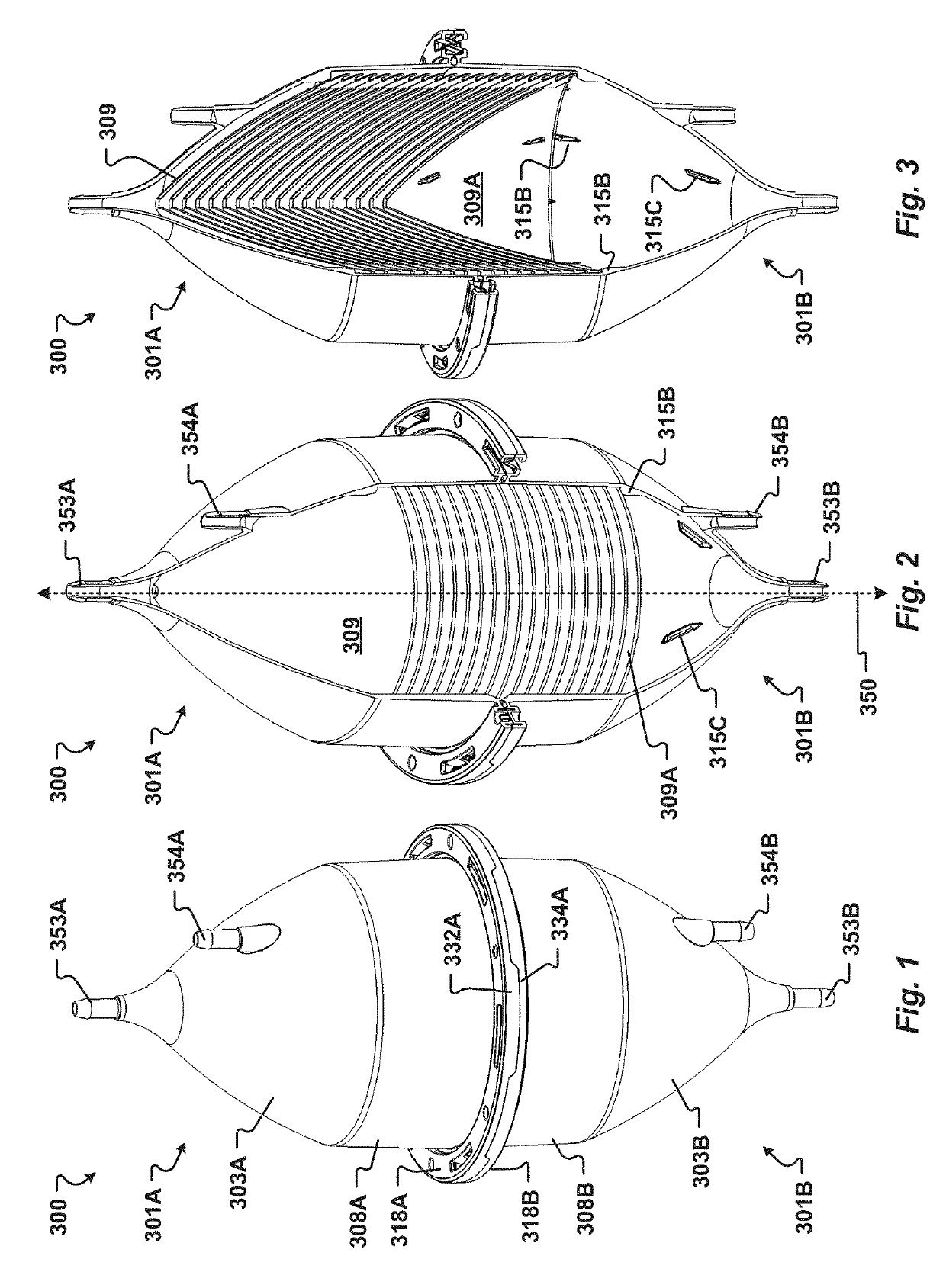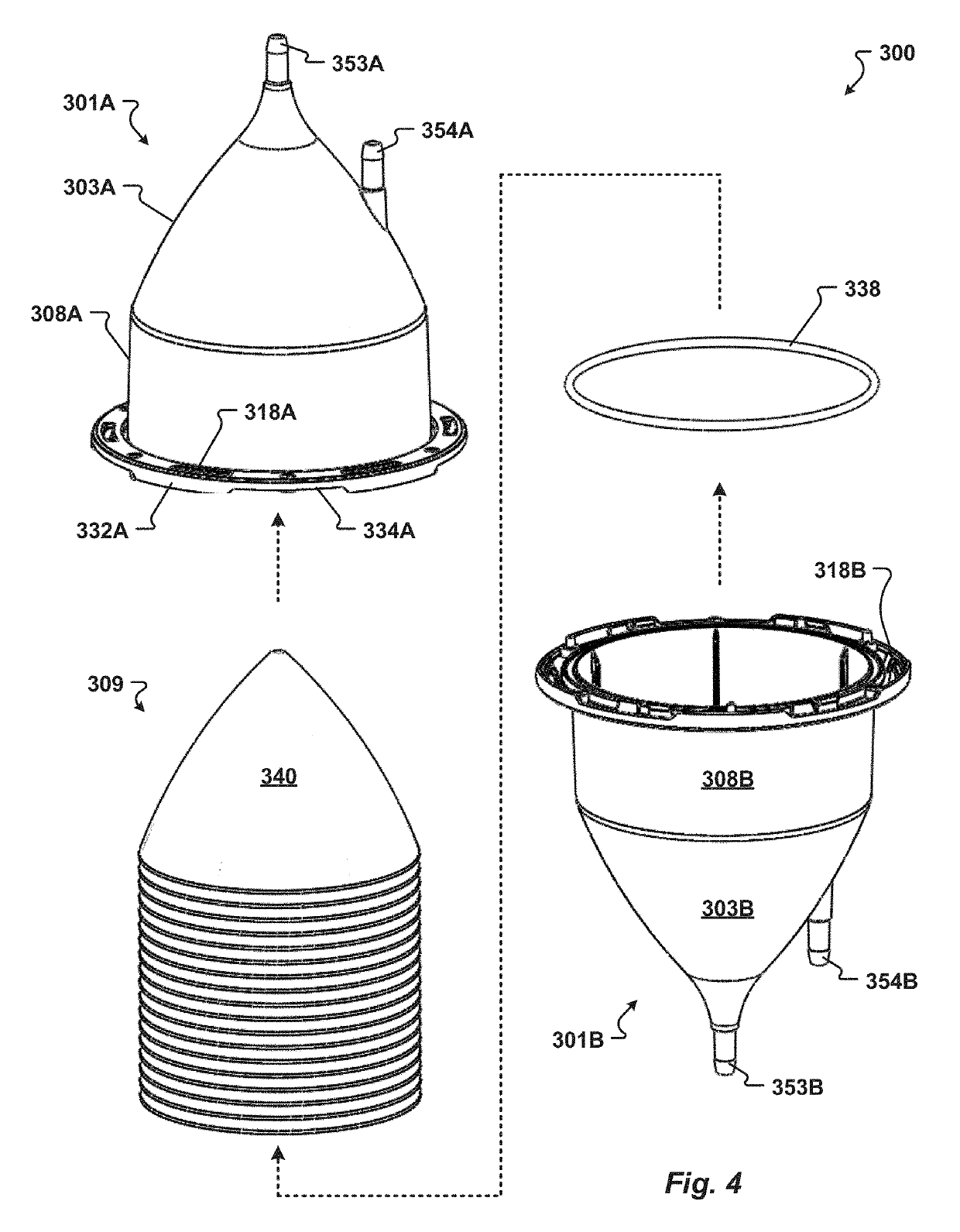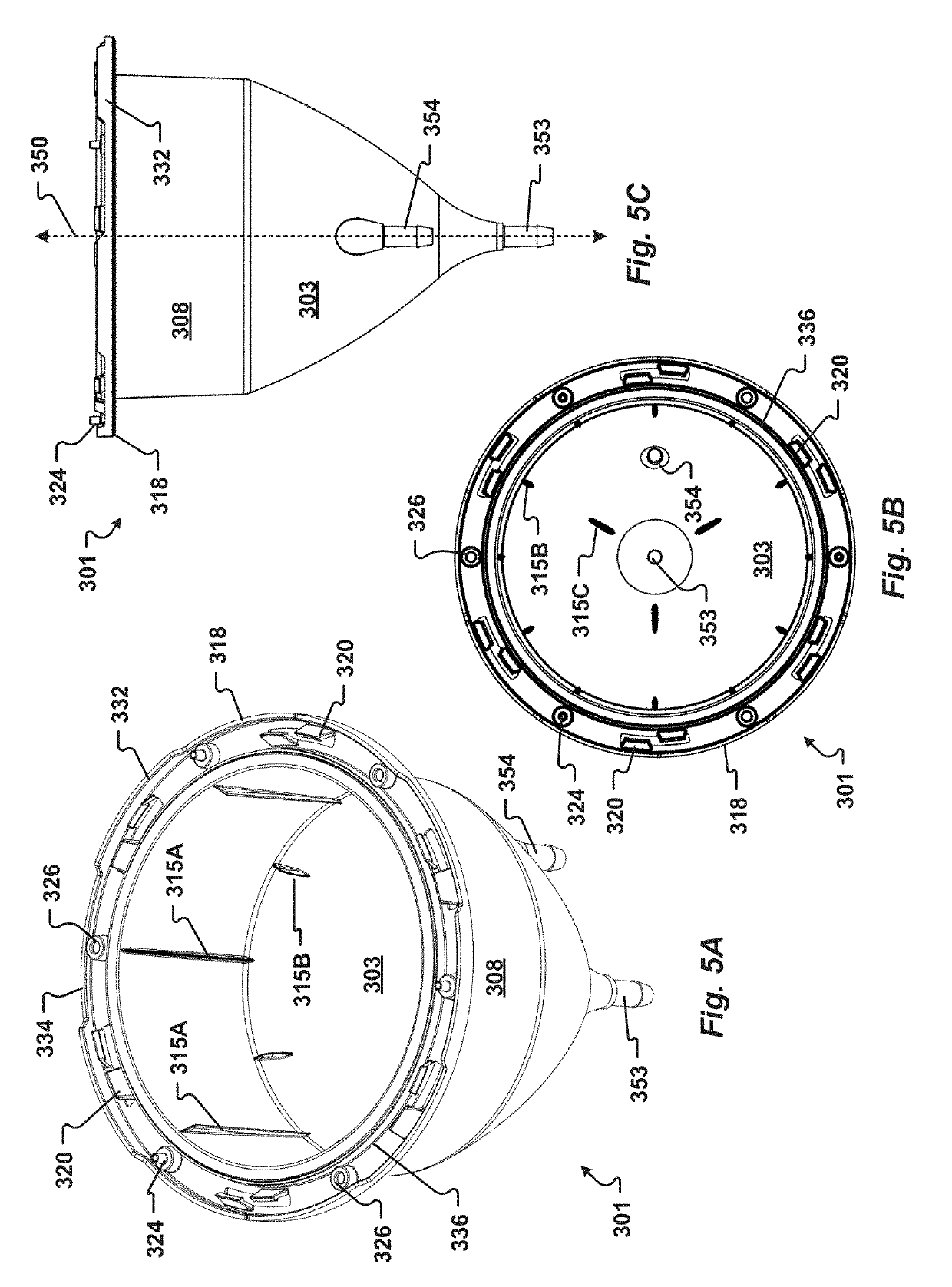Particle settling devices
- Summary
- Abstract
- Description
- Claims
- Application Information
AI Technical Summary
Benefits of technology
Problems solved by technology
Method used
Image
Examples
example 1
Yeast or other microbial cells secreting protein products
[0202]Recombinant microbial cells, such as yeast or fungal (Pichia pastoris, Saccharomyces cerevisiae, Kluyveromyces lactis, Aspergillus niger, etc.) or bacterial (Escherichia coli, Bacillus subtilis, etc.) cells, which have been engineered to secrete heterologous proteins (for example, insulin or brazzein) or naturally secreting enzymes (e.g. A. niger, B. subtilis, etc.) can be grown in bioreactors attached to the compact settler devices of this disclosure, to recycle live and productive cells back to the bioreactor, which will thereby achieve high cell densities and high productivities. Fresh nutrient media is continuously supplied to the live and productive cells inside the high cell density bioreactors and the secreted proteins or enzymes are continuously harvested in the clarified outlet from the top port (or top-side outlets 353A, 354A, 553A, 554A), while the concentrated live and productive cells are returned back to th...
example 2
Removing yeast cells from beer
[0211]In large-scale brewing operations, yeast cells are removed from the product beer by filtration devices, which regularly get clogged, or centrifugation devices, which are expensive high-speed mechanical devices. Previously, hydrocyclones were unsuccessfully tested for this application (Yuan et al., 1996; Cilliers and Harrison, 1997). These devices can be readily replaced by the settler devices of this disclosure to clarify beer from the top outlets and remove the concentrated yeast cell suspension from the bottom outlet. Due to the increased residence time and enhanced sedimentation in the conical settler zones of this disclosure, the inventor has achieved successful separation of yeast cells from cell culture liquid, harvesting the culture supernatant containing only about 5% of the cells entering the settler device in its first operation.
[0212]As the device can be scaled up or down to increase or decrease its cell separation efficiency, it is fea...
example 3
Clarifying or removing cells from mammalian cell culture broth
[0213]Similar to example 2 above, clarification of mammalian cells from cell culture broth at the end of a fed-batch bioreactor culture is a necessary first step in the harvest of the secreted product, such as antibodies or therapeutic glycoproteins, to be followed by a series of other downstream processing operations. Currently, centrifugation and depth filtration are used as the common unit operations to remove mammalian cells and cell debris from the cell culture broth.
[0214]However, periodic removal of accumulated cells from the continuous centrifugation process results in repeated cloudburst of cells into the clarified cell culture supernatant. The settler devices of the present disclosure produce a continuously clarified (cell-free or significantly depleted in cells) supernatant as the mammalian cells are easily settled inside the device. These compact settler devices offer a more consistent removal of cells from th...
PUM
| Property | Measurement | Unit |
|---|---|---|
| Angle | aaaaa | aaaaa |
| Angle | aaaaa | aaaaa |
| Temperature | aaaaa | aaaaa |
Abstract
Description
Claims
Application Information
 Login to View More
Login to View More - R&D
- Intellectual Property
- Life Sciences
- Materials
- Tech Scout
- Unparalleled Data Quality
- Higher Quality Content
- 60% Fewer Hallucinations
Browse by: Latest US Patents, China's latest patents, Technical Efficacy Thesaurus, Application Domain, Technology Topic, Popular Technical Reports.
© 2025 PatSnap. All rights reserved.Legal|Privacy policy|Modern Slavery Act Transparency Statement|Sitemap|About US| Contact US: help@patsnap.com



